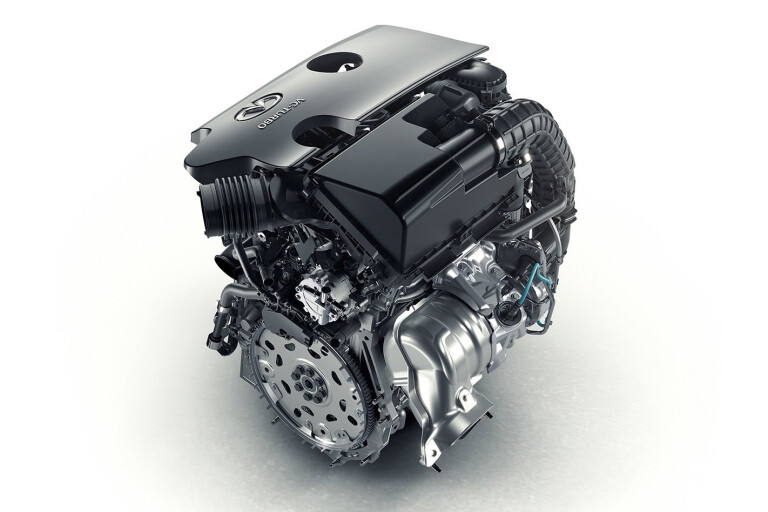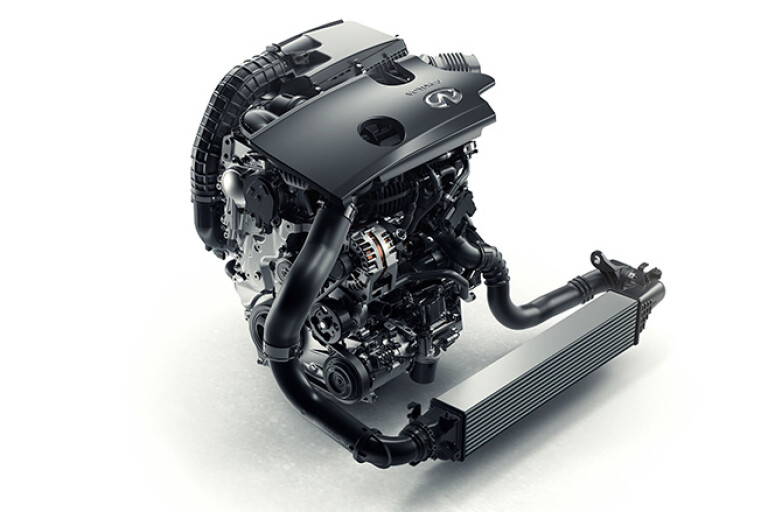
INFINITI is poised to launch a new generation of powerful engines using unique technology that makes them smaller, lighter, smoother and quieter than conventional ones – and more miserly than a fuel-efficient diesel.
The brand, the luxury offshoot of mainstream carmaker Nissan, claims it can alter the compression ratio of the engine – how much it squeezes the mix of air and fuel inside a cylinder – to optimise the engine to improve either performance while merging with traffic on the freeway, or economy when loping along it.
To do it, Infiniti will use technology it says is a production first – changing the height of where the piston slides up and down inside the engine in real time.
The engine will be revealed at October’s Paris motor show under the bonnet of a QX50, Infiniti’s next-generation mid-size SUV slated to take on the likes of the Audi Q5 – which will also go on show at Paris wearing its second-generation skin – BMW X5, Mercedes-Benz GLC-Class and the Lexus RX.

Details of the “VC-T” (variable compression-turbocharged) engine are scarce ahead of its Paris debut, but the 200kW 2.0-litre turbocharged four-cylinder engine’s performance reads more like that of a 3.0-litre V6.
The carmaker says the engine is also much smoother and quieter, both important factors for a luxury carmaker struggling to make inroads against established German and Japanese luxury rivals in Australia.
Infiniti is not the first luxury carmaker to take a look at variable compression technology as a means of increasing performance and reducing emissions.
Mercedes-Benz revealed in 2014 that it was working on a “DiesOtto” variable compression petrol engine that would deliver V6-like performance from a four-cylinder-sized unit.
According to Benz, the technology can deliver fuel savings of up to 30 percent, bringing petrol engine fuel use down to diesel engine-like hypermiling levels.

A concept version of the Mercedes-Benz engine has featured under the bonnet of the S-Class limousine-based Mercedes-Benz F700 concept car unveiled in Frankfurt in 2007.
The F700 featured a twin-turbocharged 1.8-litre four-cylinder engine under the bonnet, producing the equivalent of 175kW/400Nm. Meanwhile, fuel use is estimated to be less than 6.0L/100km, or about the same as a small city hatchback.
In contrast, mainstream Japanese carmaker Mazda is improving the fuel efficiency of its SkyActiv engines by using higher, although fixed rather than variable, compression ratios for its engines, which currently sits around 14:1.
Mazda is looking to take the ratio of future SkyActiv engines as high as 18:1 – well into diesel engine territory – which it also says will deliver fuel savings of around 30 percent.
COMMENTS